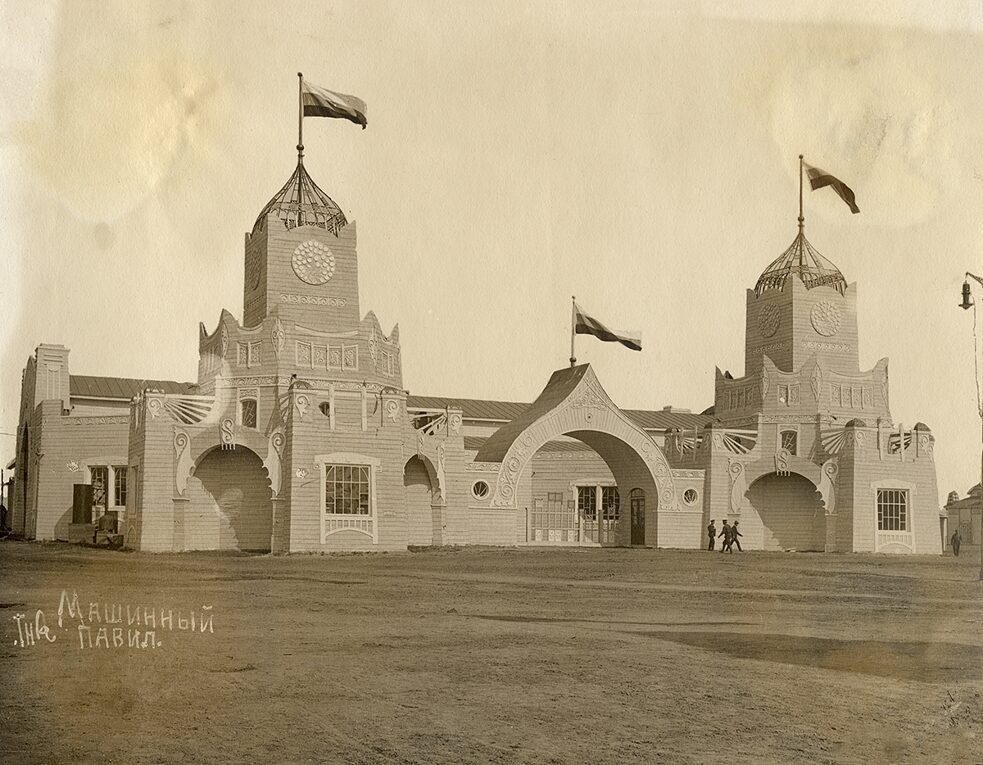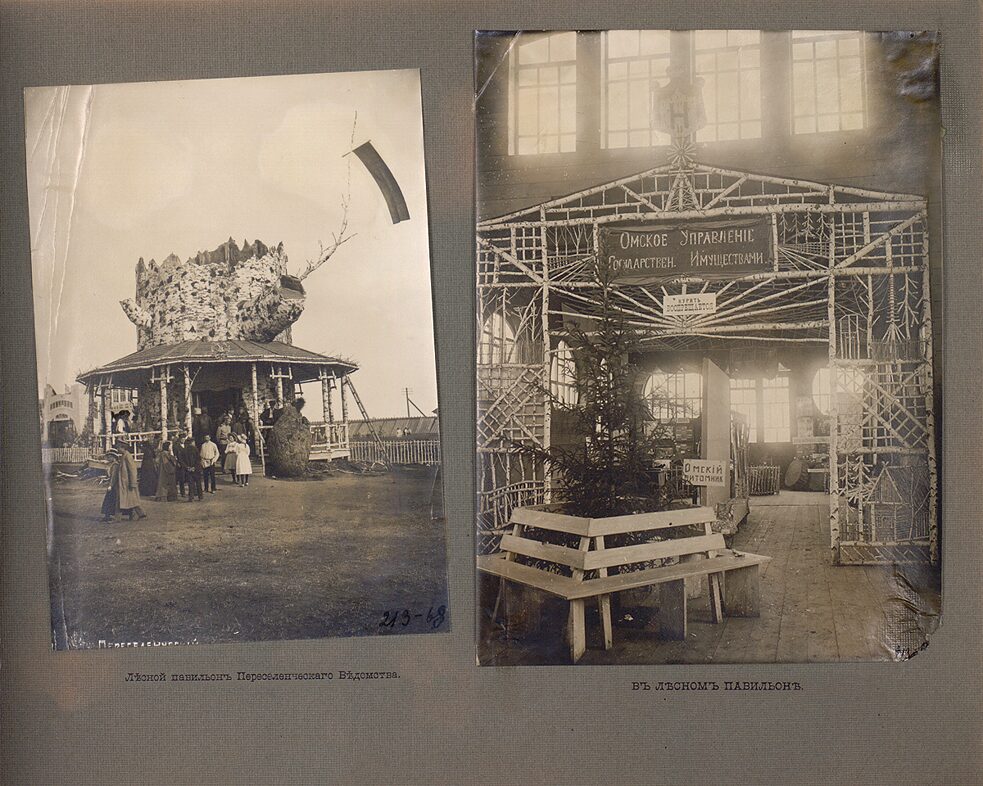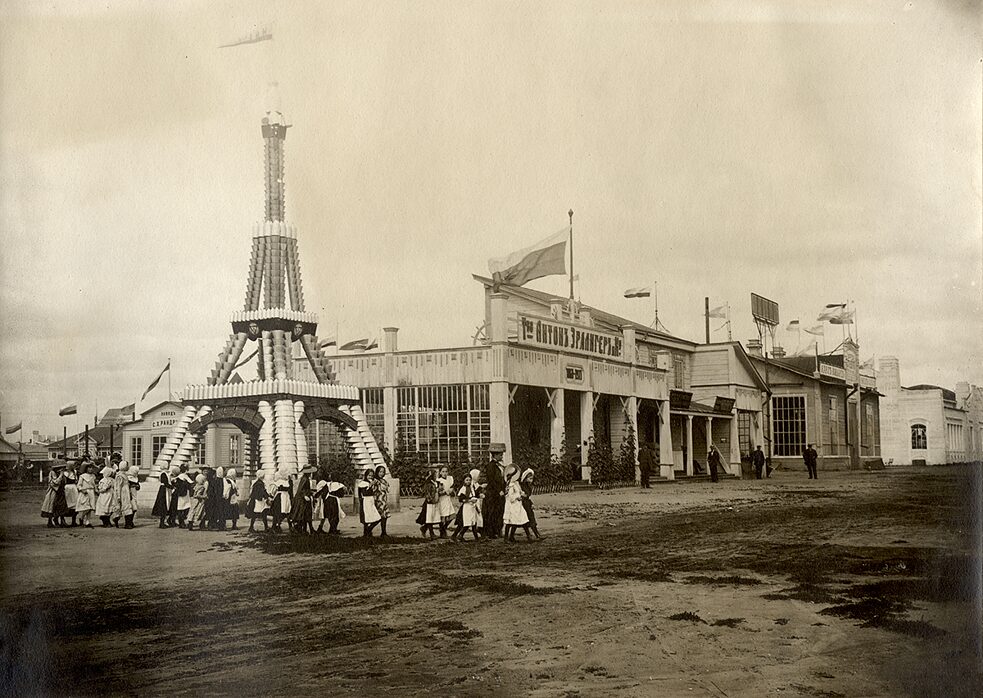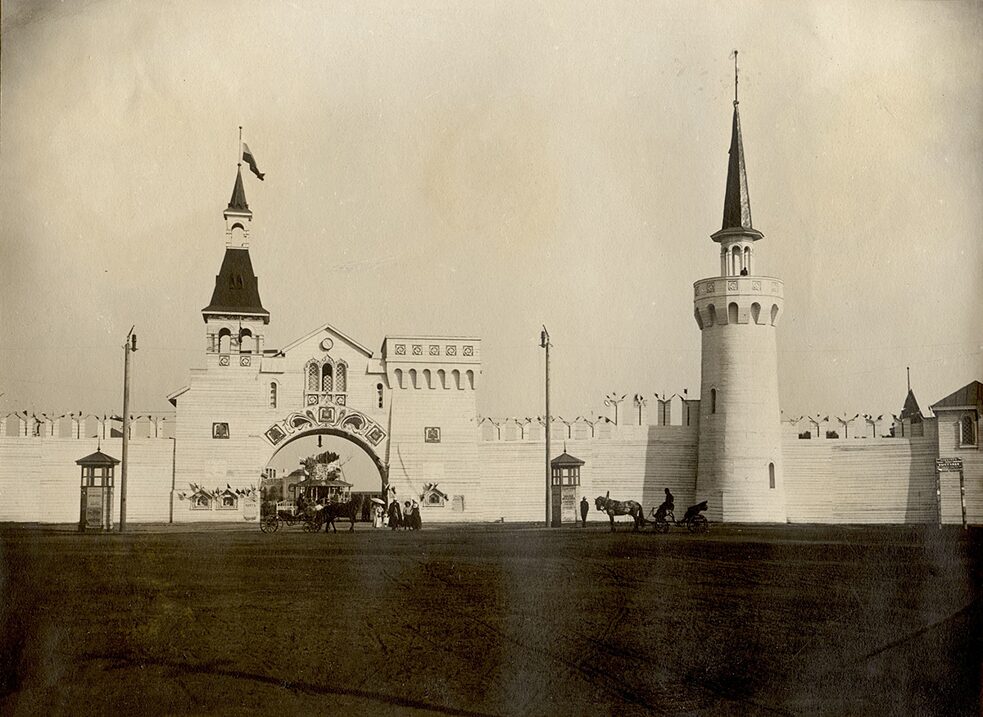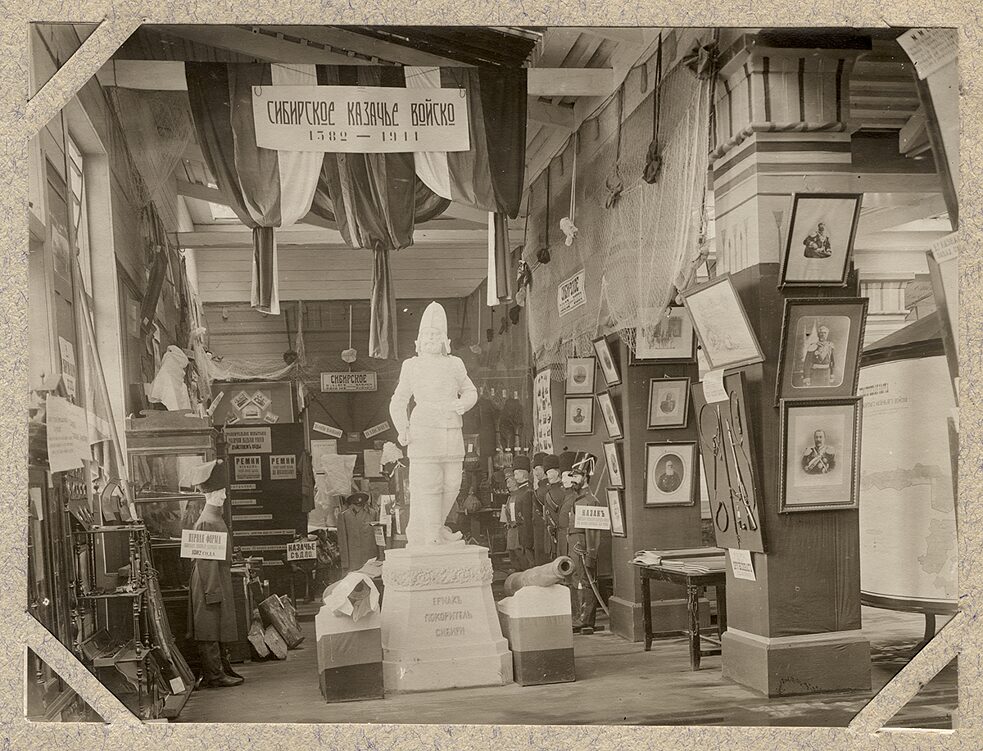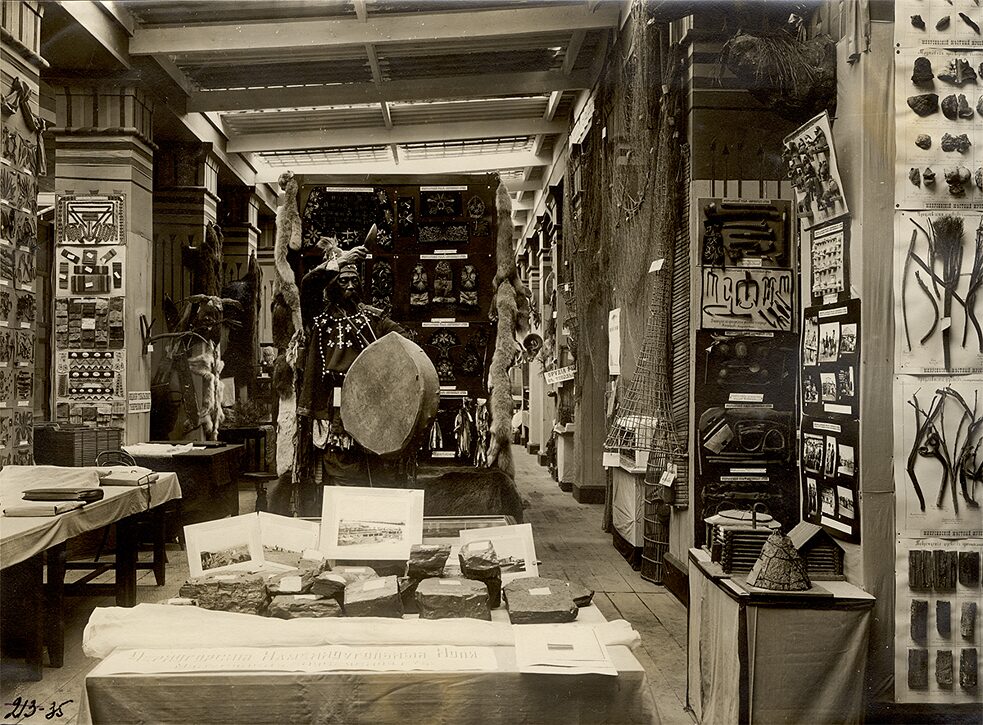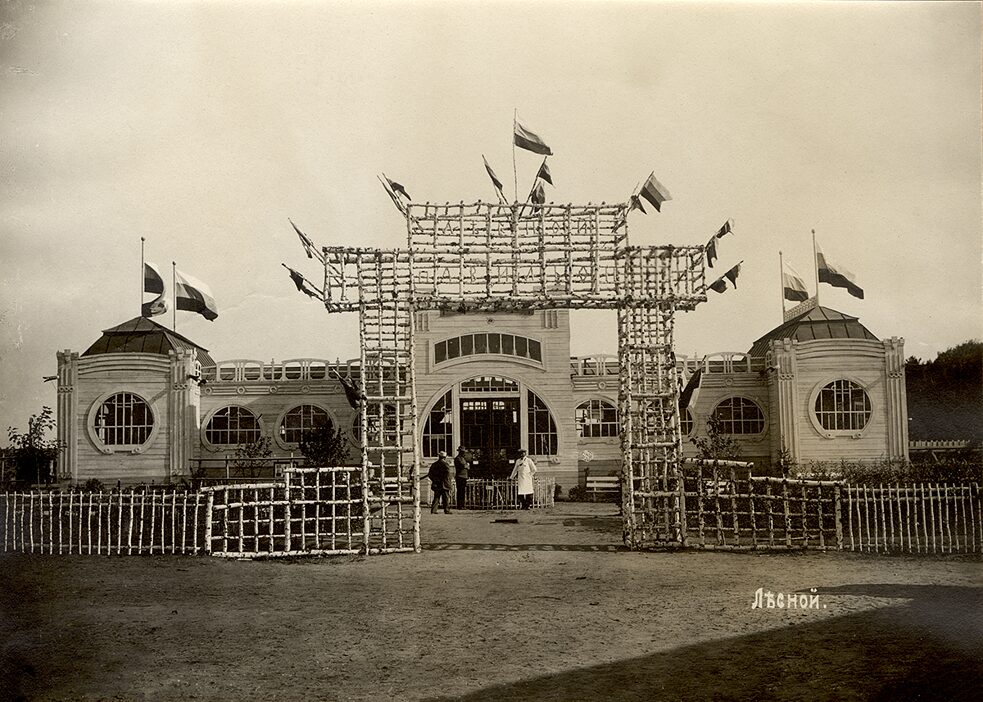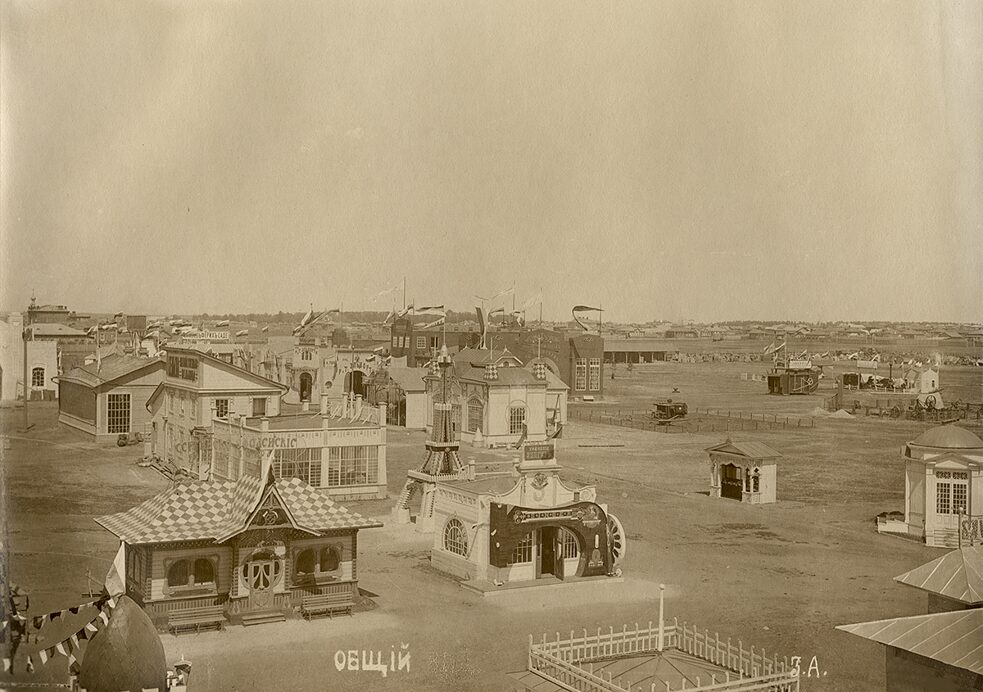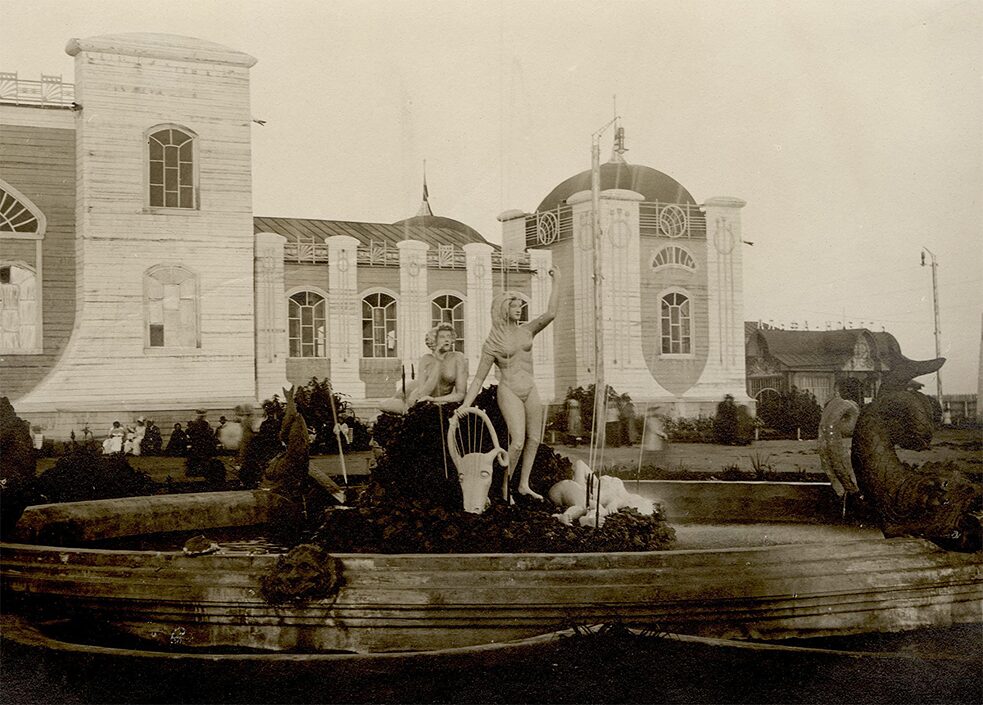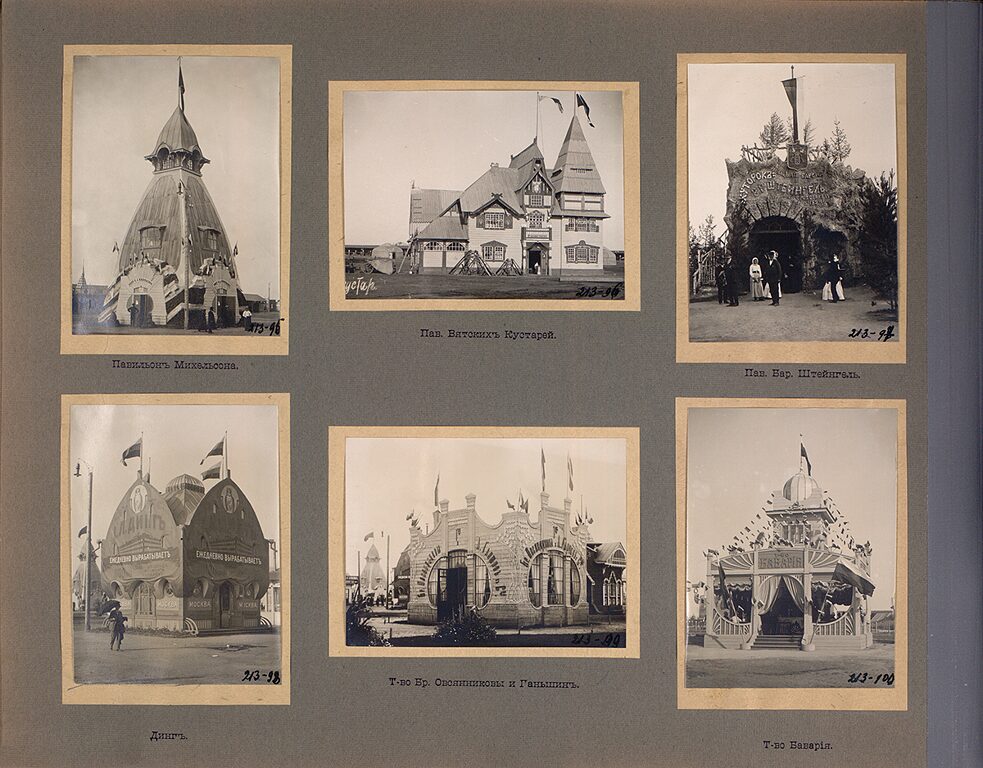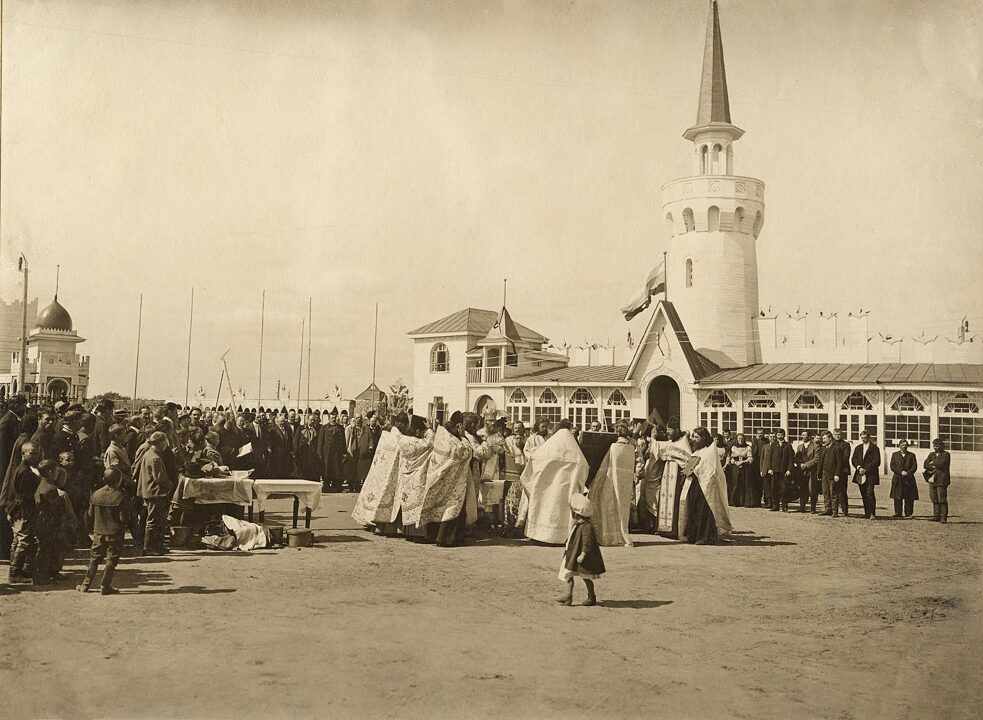First West-Siberian Agricultural and Industry Exhibition
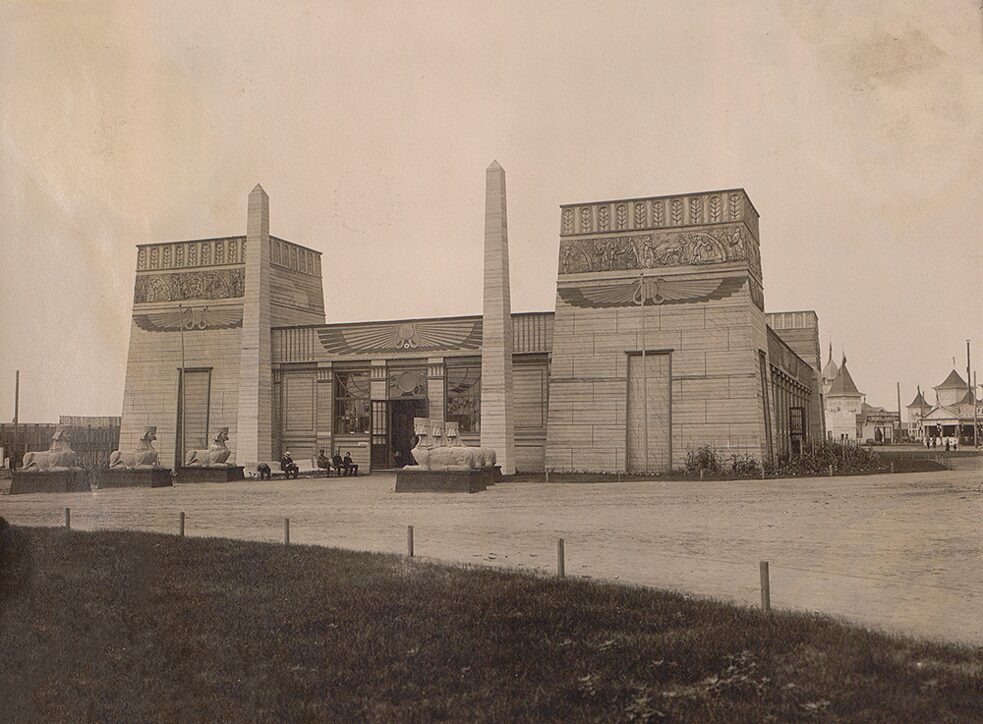
In the summer of 1911, the First West-Siberian Agricultural, Forest, Trade, and Industry Exhibition opened in the outskirts of Omsk. It was billed as a “showcase” for the region’s recent achievements and natural resources. For the Siberian architects and their colleagues invited to participate from the European part of Russia, the exhibition became a site for implementing their boldest fantasies.
The concept of the exhibition space was developed in the context of an intense search for a “Siberian style” in art and architecture. Led by the talented Krasnoyarsk architect Leonid Chernyshev, the exhibition construction team built various pavilions over the vast territory allocated for the event. The pavilions were made of traditional material, wood. The monumental Main Pavilion was built in the style of art nouveau, the scientific Pavilion of Siberian Studies looked like a replica of an ancient Egyptian temple, whereas the Machine Pavilion was a synthesis of a medieval castle and the yurt structures of Indigenous peoples. The construction programme, unprecedented for a Siberian city, also included a summer theater in the Mauritanian style, Baron Steingel’s winery pavilion created as a cave grotto, and the Forest Pavilion of the Resettlers’ Department, which looked like a huge birch tree trunk with an entrance shaped as a hole. On one of the exhibition sites, there was a replica of the Eiffel Tower assembled from enameled buckets and bowls by the Kalashnikov & Sons company. The authors also played with the subject of the proximity of the steppe, having applied the “Bukhara style” to some of the pavilions.
The Omsk exhibition demonstrated not only the outstanding talents of the local architects and engineers but also the remarkable organising abilities of its curator, Petr Arkadyevich Stolypin, chairman of the Council of Ministers of the Russian empire, who was implementing the policy of the population’s resettlement to Siberia. Over the two dozen years thMat followed, the exhibition served as a source of inspiration for the Siberian eclectic architects. The memory of this exhibition is still kept due to the building of the Krasnoyarsk Local Lore Museum, which was ordered by Leonid Chernyshev to look like an ancient Egyptian temple standing on the shore of the Yenissei River. The ideas proclaimed at this exhibition have much in common with the modern form-related speculations in Russia and Kazakhstan. These ideas have repercussions in the creative works of not only the local architects but also of one of the world’s star architects, Norman Foster
